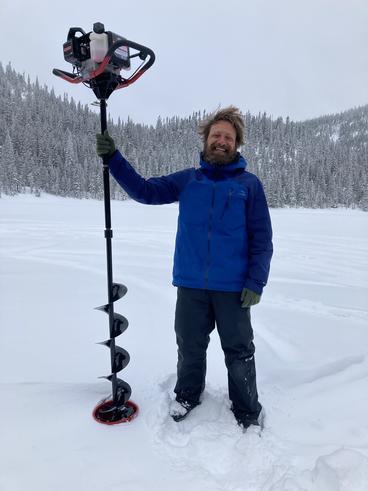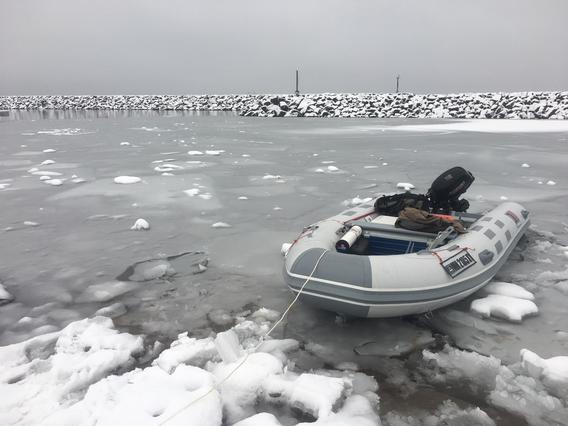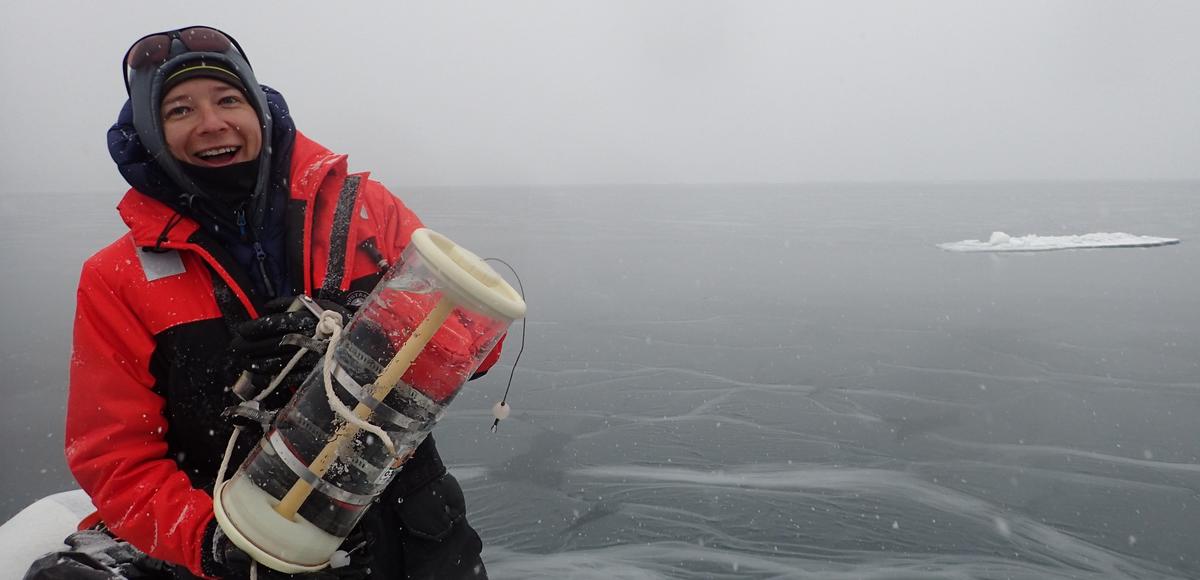Snow and lake ice are important elements of our identity and sense of place as Minnesotans, and are part of our culture through activities such as ice fishing, skiing, skating, outdoor hockey, and more. The impacts of warming winters are dramatic and sometimes fatal: the unusually poor lake ice conditions this winter have already led to several rescues of stranded ice anglers and fatalities of people falling through the ice. Even the Beargrease marathon was impacted.
While the loss of ice is a major problem for recreation and industry, it also presents a challenge to ecosystems, and to the scientists and resource managers who work on them. Historically, most lake scientists have neglected outdoor study during winter, incorrectly assuming that lakes and their inhabitants are dormant and that nothing of importance happens then. This neglect has left us with a critical information gap about the function of lakes in winter, making it difficult to anticipate what a future of even more warming holds for these important ecosystems. As one of us likes to say, trying to understand a lake without understanding winter is like trying to follow a story in a book with half of its pages missing. Finding the missing pages of the annual story of lakes has been a central goal of our research over the past 10 years, making LLO an important contributor to this new science of winter limnology.

In February of 2018, we two launched a year-round study funded by the Minnesota Sea Grant with a focus on the understudied winter season of Lake Superior. We sampled five stations in the western arm of Lake Superior by walking on ice and pulling sleds filled with different scientific equipment, or by slowly cruising amongst ice floes in our rigid-hull inflatable boat. We generated unique seasonal information about water conditions and organisms living in the water (plankton) or on the bottom (benthos) of Earth’s largest freshwater lake.
Our results showed that nutrients and phytoplankton biomass were similar among locations in winter but were noticeably different during summer. Further, despite the past assumption about winter dormancy, we found that benthos densities remained stable throughout the year. Zooplankton densities were significantly lower in the winter than in the summer but were still abundant. The different seasonal patterns of zooplankton and benthos densities may mean that fish are more reliant on benthic food in winter. We also examined lipid (fat) content in plankton and benthos, because like all animals, these lake inhabitants can store energy in their bodies. Fatty acid (one component of lipids or fats) analysis showed us that lipid content in benthos and especially in zooplankton was highest during winter, possibly indicating that energy storage is a crucial means of survival through the winter. Overall, our study provided new insights into the seasonal ecology of a large lake and emphasized the importance of biological and physical processes during the winter.
Our embrace of winter field work on Lake Superior has inspired other research projects on the winter ecology of the Great Lakes and of smaller lakes throughout Minnesota. In the winter of 2022, we organized and led a multi-institutional coordinated sampling campaign on all five Great Lakes, which we called ‘Winter Grab’. During Winter Grab, dozens of researchers from 19 organizations in the US and Canada sampled diverse physical, chemical, and biological parameters from 49 sites across the
Great Lakes. This effort created a first of its kind snapshot of the status of Great Lakes ecosystems in the winter. This effort generated the largest and most comprehensive dataset of winter data for the Great Lakes, and is providing valuable insights about how the Great Lakes work in winter as well as baseline information for future studies. Starting last year, with funding from the Legislative-Citizen Commission on Minnesota Resources, our lab also started a new study on the winter ecology of smaller Minnesota lakes. Working with the MN DNR Sentinel Lakes program, we are studying how game fish and the resources they rely on survive winter in different types of lakes.

The long neglect of winter by ecologists means that there is still a lot to learn about what lakes do in the winter and how they will change in the future. Growing recognition of the winter knowledge gap is inspiring more and more lake scientists to head out on the ice. Their research will help forecast what the future holds for our lakes and how to help manage these vital ecosystems in the face of rapidly changing winters.
